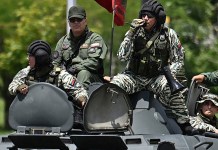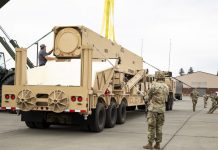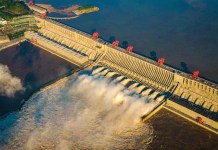The Israeli Defence Forces (IDF) made operationally focused strikes on strictly military targets on the night of 25 October to avenge the 01 October Iranian ballistic missile strikes barrage on Israel. They left the nuclear and oil facilities to prevent wider conflict escalation. Over 100 planes were involved, including the cutting-edge F-35.
The Iranian army has announced that four soldiers were killed in Israeli airstrikes. Meanwhile, in another incident on Saturday, 10 police officers and soldiers were killed during an armed clash with assailants in Taftan County in the southeastern border province of Sistan-Baluchestan.
The clash started when a police patrol came under attack by unidentified gunmen, leading to fierce fighting and the loss of multiple lives among the patrol personnel. According to Iranian media, the attack targeted both soldiers and law enforcement members. The Sistan-Baluchestan Police released a statement confirming the incident, the media report said.
Strike Modalities On Iran
Israel initially struck radars in Syria and Iraq with the aim of “blinding” early warning to Iran’s military air defenses and clearing the path for subsequent strikes on military bases.
They used electronic warfare and hard-kill strikes on radar and air defense targets. It was a part of the broad response to Iran.

It prevented Iran from building situational awareness of Israel’s plans. This was followed by offensive strikes on targets in Tehran and at Karaj, 40 kilometers from Tehran Karaj, and other strategic locations.
The Israeli Air Force struck “missile manufacturing facilities that were used to produce the missiles that Iran fired at Israel over the last year. It also struck surface-to-air missile arrays and additional Iranian aerial capabilities that were intended to restrict Israel’s aerial freedom of operation in Iran.
A senior Israeli official reported that the Security Cabinet authorized the strike in a phone conference last night. Israel’s decision to strike what it described as Iranian military targets came after weeks of deliberations within its security cabinet about the nature and scope of such an attack and described the decision as the result of a “very diligent decision-making process,” Israeli officials said.
That process also included multiple rounds of consultations with US officials, including a phone call between Prime Minister Benjamin Netanyahu and President Joe Biden.
The operation was led by the IDF Chief of Staff, Lt. Gen. Herzi Halevi, from the Air Force bunker at the Kirya base in Tel Aviv, alongside Maj. Gen. Tomer Bar, the Air Force Commander. Defense Minister Yoav Gallant was also stationed at Kirya. US officials clarified that Israel had provided notice of the timing a few hours before the operation.
There were three waves of strikes. This large-scale assault involved over 100 aircraft, including F-35 “Adir” stealth fifth-generation fighters. It involved covering approximately 2,000 kilometers of strike routing.
Using heavy munitions, long-distance strikes such as these required aerial refueling. A significant number of cruise and ballistic missiles were used.
The Israeli military said it hit “precise” military targets, and Iranian state media reported several explosions. Gunfire and explosions continued in Tehran as Israel’s “second and third wave” of attacks continued.
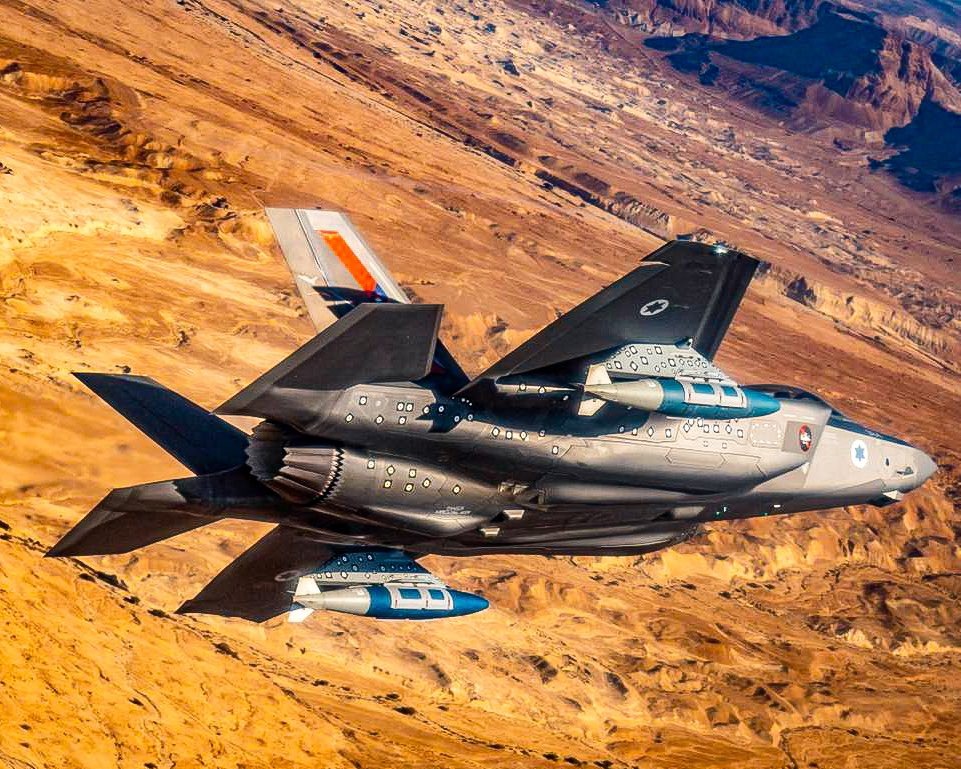
Iranian Position On Attack
Israel “attacked parts of military centers in the provinces of Tehran, Khuzestan, and Ilam,” the Iranian state news agency IRNA reported, adding that “the attack has been successfully intercepted and countered” by Iran’s “integrated air defense system.”
Tracer fire and explosions illuminated the Iranian capital’s Tehran as the second wave began. Iran said Israel attacked military facilities across the country, causing “limited damage” in some areas. Syria reported its air defenses had targeted “hostile objects” in its airspace, suggesting a broader regional impact.
Israel refuted reports that Iranian air defenses managed to intercept the majority of Israeli missiles.
“Total failure – zero interceptions,” the Jerusalem Post quoted an Israeli official as saying. Iranian agencies said the situation in the capital remained “normal” despite the explosions. Iraq closed its airspace, citing security concerns, as the strikes began.
Israel On High Alert for Retaliation
Israel’s top military spokesperson confirmed Saturday morning that the country has concluded its “response” to Iran. Israeli Prime Minister Benjamin Netanyahu, who was present in a bunker at the airbase during the attack, conducted a “security situation assessment” from the Kirya military base in Tel Aviv.
Also present were the heads of its intelligence agencies, Mossad and Shin Bet.
“The IDF is fully prepared for both offensive and defensive maneuvers, monitoring Iran and its proxies closely,” said IDF Spokesperson R.-Adm. Daniel Hagari.
Israel remained on high alert, anticipating potential retaliation, not only from Iran. The IDF also closely monitors potential responses from others like Iraq, Yemen, Syria, and Lebanon and is preparing for a spectrum of possible retaliatory actions. The Israeli Rescue Units were kept on hot standby. Israeli air defenses are also on high alert to defend Israel from a possible retaliatory strike.
“The Israel Defence Forces has fulfilled its mission,” Admiral Hagari said and warned that if Iran were to begin “a new round of escalation,” Israel will be “obligated to respond.” “Our message is clear: All those who threaten the state of Israel and seek to drag the region into a wider escalation will pay a heavy price,” he said. The attack has raised fears the long-running confrontation between the two powerful militaries could escalate into a wider regional war.
High US Presence & Alert
Biden and his top national security advisers, in a series of regular discussions, made clear they did not support strikes on Iran’s nuclear facilities or oil reserves.
“President Biden was briefed on the Israeli strike on Iran and is closely monitoring developments,” a senior US official said. Vice President Kamala Harris was briefed on her campaign trail. Saturday’s attack on Iran was 100 percent Israeli, but Israel did give the White House a heads-up in advance of the strikes. There continues to be “deep cooperation” with the United States, including on aerial defenses.

The US had moved two aircraft carriers in the region after the 01 October Iranian strikes. Two THAAD anti-ballistic missile air defense systems have also been moved along with operators.
US Defence Secretary Austin emphasizes “enhanced force posture” to defend Israel in a call with his Israeli counterpart, Minister of Defence Yoav Gallant. Secretary Austin reaffirmed the ironclad commitment of the United States to Israel’s security and right to self-defense in the face of threats from Iran and Iran-backed terrorist organizations.
United States Air Force F-16 fighter jets arrived in the Middle East from Germany on Friday, according to US Central Command, as the region braces for a possible Israeli attack on Iran.
The US aircraft include F-16, F-15E, and F-22 fighter aircraft, as well as A-10 attack aircraft and associated personnel, the Pentagon said. The US was determined to prevent any actor from exploiting tensions or expanding the conflict in the region.
IDF Capabilities
The IDF includes the ground, air, and naval forces. They include 169,500 active personnel and 465,000 reserves.
Fit for military age is 17. Israel follows conscription for 24–34 months. Available for military service are nearly 1.5 million males and a similar number of females aged 17–49. Israel’s defense budget was $30.5 billion for 2024, which is 5.3 percent of GDP.
The IDF possesses various foreign and domestically produced weapons. The aircraft include the F-35, the F-15 Eagle and F-16 Fighting Falcon, Nesher and Kfir fighter jets, and the AH-1 Cobra and AH-64D Apache attack helicopters.
The military is backed by a world-class industry that specializes in air defense systems, radars, avionics, missiles, electronic warfare, drones, and UAVs. Israel has a very sizeable inventory of cruise and ballistic missiles.
The Dolphin-class submarines have been adapted to carry Popeye Turbo Submarine-launched cruise missiles with nuclear warheads so as to give Israel a second strike capacity. Israel is known to have between 70-400 nuclear warheads.
Israel’s Arrow anti-ballistic missile system, jointly funded and produced by Israel and the United States, has successfully conducted combat intercepts of incoming ballistic missile attacks.
The Arrow 3 uses hit-to-kill technology to intercept incoming ballistic missiles in space before they re-enter the atmosphere. At the next level is the David’s Sling, which is against long-range missiles, and the Iron Dome system against short-range rockets.
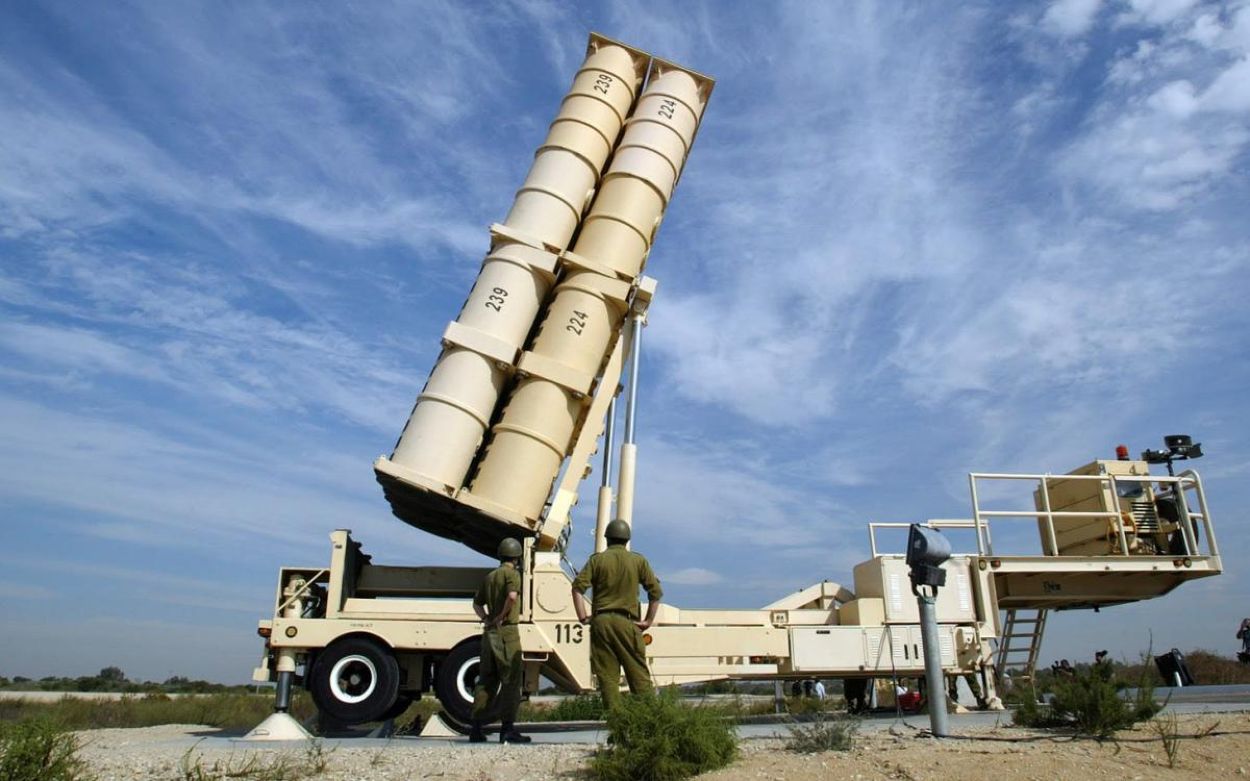
Both have been operationally successful. Israel has also worked with the US on the development of a tactical high-energy laser system against medium-range rockets (called Nautilus or THEL). Iron Beam is a short-range laser beam air defense system created to eliminate rockets, artillery, and mortar bombs. Thus, Israel has a multi-layered air defense system.
Iranian Air Assets
Iran currently has the F-5, F-14 Tomcat, F-4 Phantoms, the Mirage F1, MiG-29, Su-25, Chinese F-7, and Su-24MK. After years of UN arms embargo, Iran has still to rebuild its military fully.
They have been keen to acquire Russian Su-30s, Su-34s, Su-35s, and even the fifth-generation Su-57s. Iran has also wanted to acquire two squadrons (24 aircraft) of Chinese J-10 fighter planes with Russian-made AL-31FN engines.
Iran reportedly possesses “over 3,000” ballistic missiles with ranges up to 6,000 kilometers. This does not include the country’s expanding land-attack cruise missile force. Iran also has a significant drone Industry.
Iran Close To Nuclear Weapons
In June 2022, several analysts considered that Iran already had weapons with great fissile materials. In September 2024, the IAEA estimated that Iran had acquired enough highly enriched uranium that, if enriched further to 90% (weapons grade), would theoretically be enough for four nuclear explosive devices.
But some others believe that on technology to assemble a deliverable nuclear warhead, Iran could be 1-2 years away.
In its 2024 Annual Threat Assessment, the US Office of the Director of National Intelligence concluded that while Iran does not appear to be currently pursuing the development of a nuclear device, the nuclear activities undertaken since 2020 “better position it to produce a nuclear device if it chooses to do so.”
For Israel, Iran’s nuclear program, combined with its successful ballistic missile production capability, is a potent cocktail. Israel wants to hit Iranian nuclear facilities at the earliest, lest it be too late.
More to Come?
Speaking hours after the 01 October Iranian assault, Prime Minister Netanyahu had said: “Iran made a big mistake tonight, and it will pay for it. The regime in Iran does not understand our determination to defend ourselves and our determination to retaliate against our enemies.”
The IDF said that the strikes are a response to Iran, which has been “relentlessly attacking” Israel since October 7th “on seven fronts, including direct attacks from Iranian soil.” “Like every other sovereign country in the world, the State of Israel has the right and the duty to respond.” The IDF also warned that its “defensive and offensive capabilities are fully mobilized.”
The US Presidential Elections continue to be at play. The strikes last night were just a preamble. They were punishing but not escalatory. I feel the Israel agenda is not over.
The strikes have been a trailer. The main movie has still to play out. There will be more to come. Timing and extent will be decided by Israel. It is a matter of time before Israel eventually decides to hit Iranian nuclear facilities.
- Air Marshal Anil Chopra (Retired) is an Indian Air Force veteran fighter test pilot and former Director-General of the Center for Air Power Studies in New Delhi. He has been decorated with gallantry and distinguished service medals while serving in the IAF for 40 years.
- He tweets @Chopsyturvey
- Follow EurAsian Times on Google News

